Old-School Show-Off: Catalina de Erauso, the Swashbuckling Nun
Forgotten memoirs by rakish individuals

People have hated memoirs for almost as long as they’ve been written. Indeed, saying biting things about memoirs is an art form in and of itself. In 1798, the philosopher Friedrich Schlegel sniffed that memoirs were written by “neurotics who are fascinated by their own ego”; in 1827, the biographer John Lockhart decried the popular love of memoir as a “mania for this garbage of Confessions”; and by 1994, the author William Gass was snarking that writing a memoir was like saying, “Look, Ma, I’m breathing.” When we weren’t judging memoir-writers for being egomaniacs, we were giving them the side-eye for being fraudsters — like ten years ago, when a boom of fake memoirs shook our collective belief in the genre to the core. Since the New York Times declared in 1996 that we were in the “age of the memoir,” we’ve slid into memoir overdrive: there are too many memoirs; celebrity tell-alls are kind of a joke; Prince’s ex-wife will conveniently be publishing an “intimate memoir” this spring — and yet our lust for “this garbage of Confessions” burns on.
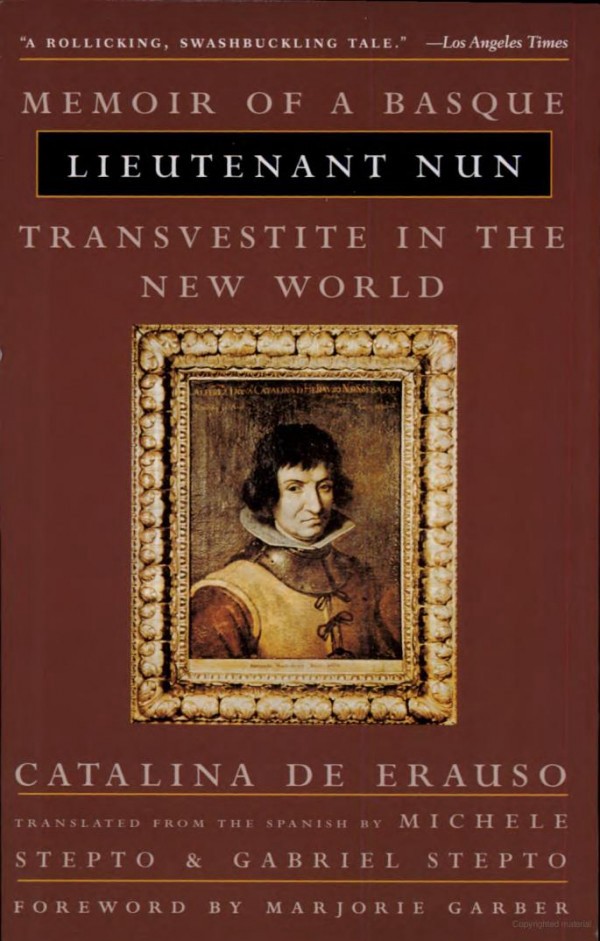
I like the bold memoirs of ages past. The ones written by the show-offs. The ones that are a little bit off-putting at first, so confident are their writers, but that still leave us thinking, Man, that’s certainly one way to blow through life. One of the most colorful, wild, and endearing memoirs that history has forgotten was written (or narrated, or partially narrated) in the seventeenth century by a runaway Basque nun named Catalina de Erauso. She was sort of a terrible person — a colonialist and a killer, a liar and a cheat — but nonetheless, her recollections feel practically aspirational today, given her tendency to smash through nearly every social structure that tried to contain her. She became a folkloric hero during her lifetime, and when her memoir was finally published in 1829, two centuries after her death, the rest of the world encountered an incorrigible anti-heroine so endlessly bold and ridiculously charming that they could forgive her anything: the scandalous cross-dressing! The gambling! The murders! The time she accidentally killed her brother!
Catalina was born in 1592 in San Sebastián, Spain, and her family placed her in a convent when she was four, but neither homeland nor nunnery could hold her for long. After breaking out of the convent at age 15, chopping off her hair, and sewing her skirt into a nice pair of breeches, she changed her name to Francisco (or, later, Alonso, or possibly Pedro) and sailed across the Atlantic as a “ship’s boy” in the service of her uncle. In Panama, she filched 500 pesos from her unsuspecting relative and crept ashore, where she found work first in the service of an army captain and then as a merchant’s assistant. She would bounce from job to job and from master to master for the next decade or so, roving from Panama to Chile, inward to Argentina, and across plenty of dusty miles in between.
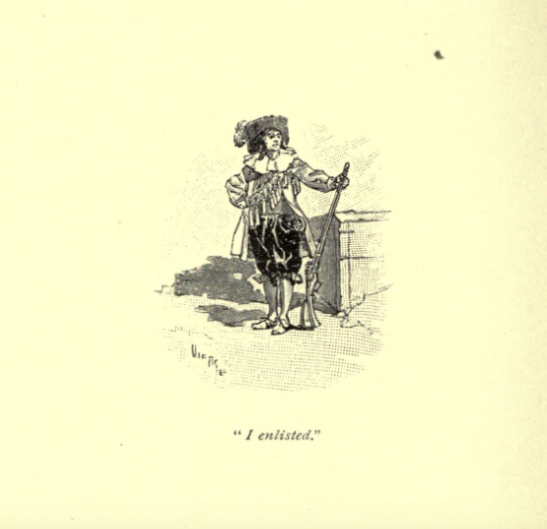
For seventeenth-century Spaniards, there was a sense that the New World — which their kingdom’s soldiers were steadily pillaging — was a fantasy land, where the rules were in flux, when there were rules at all. And so it suited Catalina, who never did well with rules. She lived openly as a man there, and nobody had any idea that this rambunctious young conquistador had been born female (or at least, if they had their suspicions, Catalina certainly wasn’t going to mention them in her memoirs). There were heaps of bustling towns for her to gape at, tons of beautiful women to flirt with, and gobs of violence to sustain her. Her hair-trigger temper and love of gambling were always getting her into trouble; her instinct was to stab first and run to a church for sanctuary later. The first time she murdered, it was because some guy sat too close to her in a theater, and so she sharpened her knife into a terrifying saw-like object and slashed his face open. (He lived, but found her months later, and she finished him off then.) She couldn’t stand being insulted, and if anyone dared hint that she was cheating at gambling or yelled that she “lied like a wittol,” she’d leap up, brandishing her rapier, and fight him in the street.
Her penchant for flirting with the wrong women and dueling at the slightest provocation meant she was always leaving town and scrambling for a new job, and so in Lima, Peru, she enlisted as a soldier and took off with her company to Concepción, Chile. There, she ran into her older brother. Captain Miguel de Erauso had been stationed in South America since Catalina was two, so he had no chance of recognizing her. She introduced herself as a fellow San Sebastián native, and he embraced her, invited her to dinner, and had her transferred into his company. The two got along famously for almost three years until she started visiting his mistress behind his back. He retaliated by having her shipped elsewhere to battle, where she spent a lot of time “trampling, killing, and receiving hard knocks.” She got a small promotion when she recaptured her army’s flag, but was later passed over for a larger promotion, because she killed an enemy chieftain instead of bringing him alive to her superior.
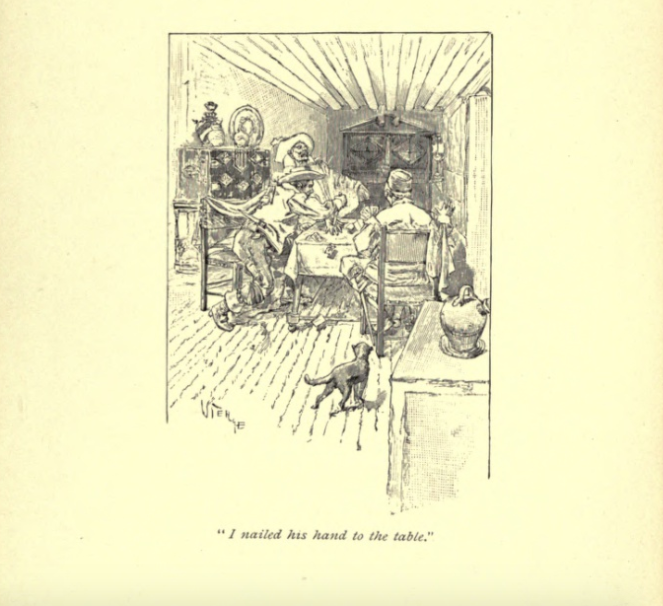
Her reckless joys soon gave way to terrible sorrow, however. Back in Concepción, her friend and fellow officer Don Juan de Silva was challenged to a duel, and brought Catalina along as his traditional “second.” The night was pitch black, so Catalina and her friend tied handkerchiefs around their arms to be able to recognize each other. As they slashed and parried in the darkness, Catalina felt her rapier plunge into the chest of her opponent. Her victory melted into horror upon hearing the death groans of her antagonist: it was her brother. He died that night without ever finding out who she really was.
In Piscobamba, Peru, someone called her a “cuckold rascal” and so of course she slew him, for which the authorities of the town gave her a death sentence, attempted to extract her confession by loosing a “cataract of monks” on her, and then dragged her to the gallows, “rigged out in a taffeta suit and hoisted on a horse.” At the scaffold, she mocked the executioner for being drunk. “These priests are enough to put up with!” she hollered. Catalina’s memoirs borrow liberally from fictional tropes — she claimed she was saved at the last minute, when the witnesses against her had a change of heart.

When she wasn’t skewering people through the doublet up and down the western coast of South America, Catalina was hitting on women. But she was in no hurry to be bogged down with a wife. She dodged several engagements and a couple of rich older widows, and once, while working for a merchant in Lima, she was fired for “tickling [the] ankles” of her boss’s sister-in-law. In Tucumán, Argentina — where she fled after murdering her brother — she was engaged to two women at once, and led both of them on with false promises (selflessly accepting their gifts of food, money, and a “fine velvet suit” in the meantime) until she had the chance to skip town.
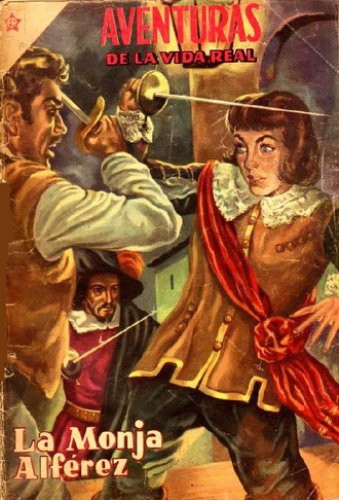
While some scholars have argued that Catalina represented a blurring of boundaries, a New York Times reviewer pointed out in 1996 that her behavior was fairly heteronormative. The postures Catalina adopted were so masculine as to be completely clichéd: fights over cuckoldry, reluctance to marry, extreme machismo. Though she wore men’s clothing for most of her life, she still referred to herself as “a woman” near the end of it. She refers to herself by both male and female pronouns in her memoirs (though this doesn’t mean much if her memoirs were written down by someone else), but most scholars and writers stick with female pronouns when referring to Catalina, all the while disagreeing on how exactly we should interpret her.
Her memoir is tricky in this way, because Catalina is not at all self-reflective! She is not terribly concerned with unpacking her choice to pass as a man; she wants to talk about all the “roving and seeing the world” she’s done. Her sexual exploits seem to be written with a wink to her audience, since there’s a constant sense of did-she-or-didn’t-she regarding any potential, uh, consummation. (Can “tickling the sister-in-law’s ankles” ever be read as merely tickling the sister-in-law’s ankles?) She is a literary pícaro (or pícara), an anti-heroine who lives by her wits, works for many masters, and recounts her exploits in a darkly comedic tone without bothering to peer inward. She is unruly, unreformable, but in the end highly appealing. And she leveraged this persona well, using it to crack through the social structures that bound her to become something else entirely: a celebrity.

One thing had to happen before she became famous, though: she had to be revealed as a woman. In Cuzco, Peru, after yet another gambling-related duel went really wrong (let’s just say hands were nailed to tables by daggers), she was stabbed through the shoulder and side so badly that everyone assumed she was dying. And so she whispered the truth to the monk who leaned over her, waiting for her final confession: even though she “slew, wounded, embezzled, and roamed about” with the best of the male conquistadors, she was a woman. And not simply a woman, she declared: a virgin maid!
But it wasn’t as if Catalina was going to start acting ladylike just because she’d confessed to a random monk. Instead, she healed and made her way to the Peruvian city of Guamanga, where she told some of her enemies that she was “the Devil,” got in a terrible fight, and was rescued by the bishop Don Fray Agustín de Carvajal, who would be her friend for the rest of his life. Catalina poured out her secrets to him, and they talked until one o’clock in the morning. She then boldly suggested that a couple of older women examine her to prove that she was both female and virginal; they did, and found her “a maid entire, as on the day I was born.” Catalina loved the bishop, she really did, but when he gently suggested that maybe she should find a nice, quiet convent and finish up her nun-hood, she declined, and sailed back across the Atlantic in a leaky boat. When she landed on Spanish ground, she found herself famous.
The Lieutenant Nun, they called her! She met the king of Spain; she met the Pope; she dined with princes. Ever the adept self-mythologizer, she petitioned the king for a military pension, saying that she deserved it not just because of all the fighting that she’d done for the motherland but also for the “singularity and prodigiousness of her life.” She even pitched her exploits as driven by sheer religious motivation: she had “a special inclination to take up arms in defense of the Catholic faith.” In a twist that still surprises, the Pope gave her permission to keep on wearing men’s clothes, after reminding her about the Sixth Commandment (the one that says not to kill people). Triumphant, Catalina kept partying, sat for portraits with the famed artists Juan van der Hamen and Francisco Pacheco, and spread her own legend wherever she went. She told the travel writer Pedro de la Valle that she never took baths, and that she used some mysterious and painful Italian remedy to make her breasts disappear.
Catalina’s story stands out not just for her exploits, but for the fact that she seemed quite happy being exactly who she was. Her blithe violence, her incomparable swagger, and her deft navigation of her celebrity all indicate someone who knows she’s different and special precisely because of that difference. “She never had evil intentions,” wrote La Valle, “but her calling was to the sword and freedom.” Not once did she consider returning to the convent, or dressing in women’s clothes again, or sheathing her rapier forever. Instead, she expected the world to adjust around her.
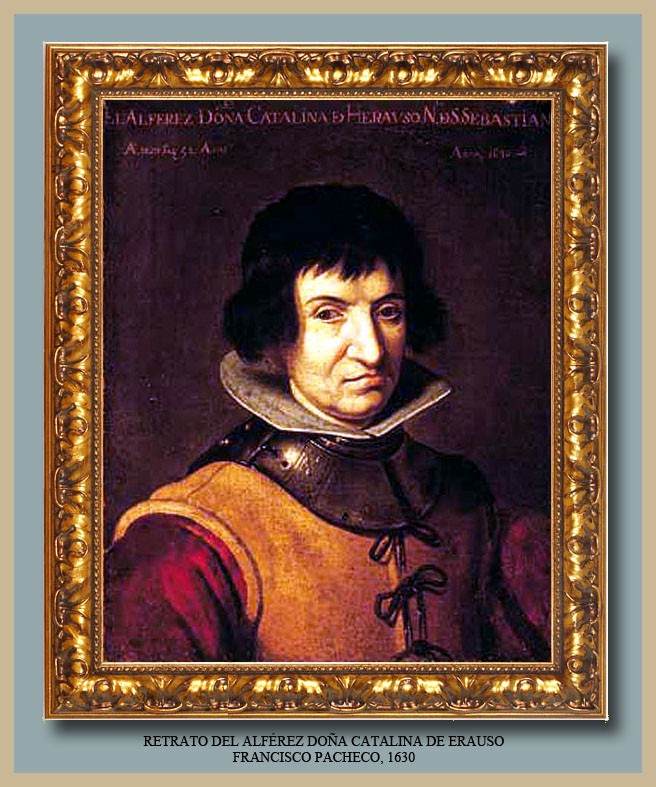
The crazy thing is that the world did. One might expect that Baroque-era Spain would freak out and burn her at the stake, but instead they grinned at her, welcomed her into their ranks, and immortalized her almost immediately — for example, the playwright Juan Pérez de Montalbán wrote a play about her in 1626, while she was still alive. (Though most of the world proceeded to forget her, she’s still famous in the Basque region — and in academia.) Scholars have pointed out a couple of reasons for Spain’s tolerance: first of all, the world of the Baroque was already obsessed with “things prodigious, striking, and bizarre,” and Catalina — the nun without breasts, the man without a phallus, the soldier born as a woman — fascinated them. (I would argue too that she charmed them; she was so confident and blatantly self-serving that how could you not be enchanted by this rakish ex-nun/gambler/wild child?) Furthermore, the science of the time declared that women were men who simply hadn’t been perfected yet, a concept known as the one-sex model. Catalina used this idea to her advantage, embodying the idea that she was transcending “her lowly condition as a woman” by draping herself in masculinity.
Princes and portraits didn’t hold her attention for long, though, and by 1630, she was sailing back to America. She made her way to Mexico, and spent the last twenty years of her life going by the name Antonio and working as a muleteer, transporting mercantile goods around the region. She fell in love with a pretty young girl and wrote the girl’s fiancé a letter of “incomparable arrogance,” challenging him to a duel, though her friends convinced her to put away her blade. She died in 1650 in the Mexican town of Cuitlaxtla, where one biographer says she was buried “with considerable pomp.”
Her memoir ends on a very abrupt note. In the final chapter, she’s traipsing around Naples, when two girls giggle at her and refer to her as a woman. “Whither away, my Lady Catalina?” they chirp. Her lightening temper flashes. “To give you a hundred thumps on the scruff of your necks, my lady strumpets,” she cries, “and a hundred slashes to anybody who tries to defend you.” The girls slink away, shocked and subdued, and the book ends there. We can only assume that Catalina strides on down the road, then, with a hat pulled down rakishly over her short hair, bold and victorious and forever ready for a fight.
Tori Telfer is a writer and a fan of all creatures with swagger. Her first book, Lady Killers (Harper Perennial), will be published on October 10, 2017.
